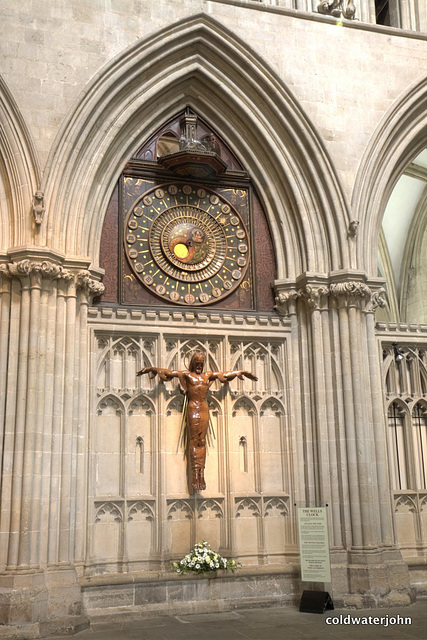Wells Cathedral ceiling detail
Wells Cathedral choir stall tapestries
Wells Cathedral organ from the High Altar
Wells Cathedral view of the High Altar
Wells Cathedral arches behind the High Altar
Home at last!
Church House garden, Goodrich
Goodrich Churchyard from Church House Garden
Goodrich Church (partly 12th Century) and Garden w…
The Wye Valley - a Goodrich garden
Pride of India...
Kerne Bridge in The Wye Valley near Goodrich
The Wye Valley and Goodrich village - St Giles Chu…
The Wye Valley from high on Coppett's Hill
The Wye Valley and Goodrich from Coppett's Hill
Goodrich Church and Garden 5739754581 o
The Wye Valley and Goodrich
The Wye Valley and Goodrich
Pan of the Wye Valley from Coppett's Hill, Goodric…
The Wye Valley and Goodrich
The Wye Valley and Goodrich
The Wye Valley and Goodrich
The Wye Valley and Goodrich
Wells Cathedral organ - playing Toccata and Fugue…
Wells Cathedral organ - playing Toccata and Fugue…
Wells Cathedral
Wells Cathedral Side aisle
Wells Cathedral Main ceiling detail
Wells Cathedral
Wells Cathedral facade
Wells Memorial plaque to Mary Bignal Rand - winner…
My shoes are hurting, mummy!
Stickland Farm, garden statuette
Stickland Farm - the garden on an early morning in…
Stickland Farm garden on an early morning in May,…
Milton Abbas, Dorset
Milton Abbas, Dorset
View west from Portland Bill, Dorset
The cliffs at Lullworth, Dorset
The Osmington White Horse, Dorset
The Osmington White Horse near Weymouth, Dorset
Lullworth Cove, Dorset
Path up to the chalk cliff tops at Lullworth, Dors…
Lullworth Cove, Dorset
Lullworth Cove, Dorset
16 sec. • f/19.0 • 23.0 mm • ISO 100 •
Canon EOS 50D
See also...
Authorizations, license
-
Visible by: Everyone -
All rights reserved
-
146 visits
Wells Cathedral clock


The Wells Cathedral clock was built around 1392 and has been in almost continuous use ever since. It is the second-oldest surviving clock in England (the oldest is at Salisbury Cathedral). Similarities in construction make us think that the craftsmen went on from Salisbury to Wells to make this clock.
In the 1600s the original horizontal swinging beam mechanism called a foliot balance was replaced by a pendulum and anchor escapement to improve timekeeping. The clock also drove a display of automata figures which can still be seen at Wells every 15 minutes.
This original mechanism came to the Patent Museum in London in 1871, where new bells were added.
In the 1600s the original horizontal swinging beam mechanism called a foliot balance was replaced by a pendulum and anchor escapement to improve timekeeping. The clock also drove a display of automata figures which can still be seen at Wells every 15 minutes.
This original mechanism came to the Patent Museum in London in 1871, where new bells were added.
- Keyboard shortcuts:
Jump to top
RSS feed- Latest comments - Subscribe to the comment feeds of this photo
- ipernity © 2007-2025
- Help & Contact
|
Club news
|
About ipernity
|
History |
ipernity Club & Prices |
Guide of good conduct
Donate | Group guidelines | Privacy policy | Terms of use | Statutes | In memoria -
Facebook
Twitter
